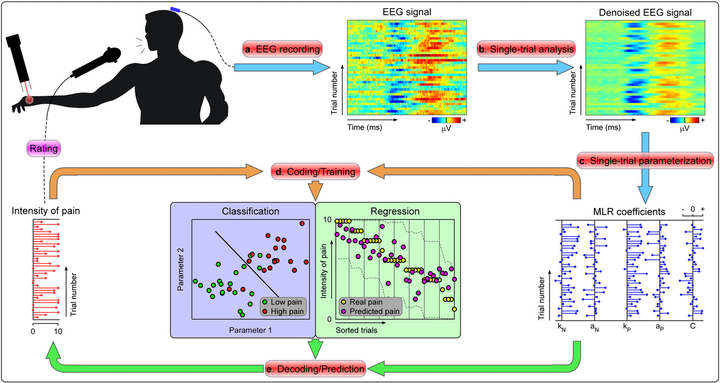A novel approach to predict subjective pain perception from single-trial laser-evoked potentials

Abstract
Pain is a subjective first-person experience, and self-report is the gold standard for pain assessment in clinical practice. However, self-report of pain is not available in some vulnerable populations (e.g., patients with disorders of consciousness), which leads to an inadequate or suboptimal treatment of pain. Therefore, the availability of a physiology-based and objective assessment of pain that complements the self-report would be of great importance in various applications. Here, we aimed to develop a novel and practice-oriented approach to predict pain perception from single-trial laser-evoked potentials (LEPs). We applied a novel single-trial analysis approach that combined common spatial pattern and multiple linear regression to automatically and reliably estimate single-trial LEP features. Further, we adopted a Naïve Bayes classifier to discretely predict low and high pain and a multiple linear prediction model to continuously predict the intensity of pain perception from single-trial LEP features, at both within- and cross-individual levels. Our results showed that the proposed approach provided a binary prediction of pain (classification of low pain and high pain) with an accuracy of 86.3 ± 8.4% (within-individual) and 80.3 ± 8.5% (cross-individual), and a continuous prediction of pain (regression on a continuous scale from 0 to 10) with a mean absolute error of 1.031 ± 0.136 (within-individual) and 1.821 ± 0.202 (cross-individual). Thus, the proposed approach may help establish a fast and reliable tool for automated prediction of pain, which could be potentially adopted in various basic and clinical applications.